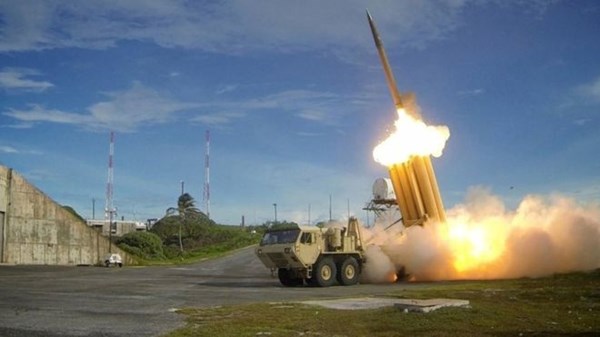U.S. THAAD anti-missile system begins its operation in South Korea
The U.S. military has completed the deployment of the THAAD anti-missile system, which triggered protests from Russia, China and North Korea when it was delivered to South Korea. The missile system is there to intercept missiles from North Korea, reports the BBC.
The capabilities of THAAD missile launchers and equipment to intercept North Korean missiles are limited at the moment, a Pentagon official told the news agency Agence France-Presse.
According to him, it will take several months to bring the system to full combat capability.
The U.S. military announced the arrival of the system in South Korea in early March, the day after North Korea launched four ballistic missiles.
The THAAD (Terminal High Altitude Area Defense) missile system can destroy short- and medium-range ballistic missiles within a radius of up to 200 kilometers and at altitudes up to 150 kilometers.
These systems were previously deployed in Hawaii and Guam in the Pacific to stave off threats from North Korea. In July 2016, the decision was made to deploy the system in South Korea.
In the meantime, the participation of American B-1B Lancer bombers in joint military exercises with South Korea put the region “on the brink of nuclear war,” said the Korean Central News Agency on Tuesday, May 2nd.
A group of American warships and a submarine are also in the conflict zone.
The military situation in the region remains tense. Pyongyang continues to make threats against Washington and Seoul.
On May 1st, the day before, U.S. President Donald Trump said that he would “consider it an honor” to meet with North Korea’s top leader, Kim Jong-un. Later, White House Press Secretary Sean Spicer clarified that this was a hypothetical possibility, but since Pyongyang is threatening to use nuclear weapons, such negotiations are now impossible.
THAAD is located on a former golf course in Seongju County in the center of the country. The decision to deploy the missile system was met by protests from local residents, who fear that it will make the region a target for enemy attacks.
Despite the United Nations ban, Pyongyang continues its testing of ballistic missiles. There were two unsuccessful launches in the past few weeks.
The presence of American radar in South Korea (it is part of the missile defense system) was also not received favorably by China. According to Beijing, the radar will allow the Americans to monitor missile tests conducted by Chinese armed forces, as well as parts of the territories of Mongolia and Russia.
China and Russia possess such significant nuclear arsenals that it would be impossible to contain them with the anti-missile systems that are planned to be deployed in South Korea, said Richard Weitz, Director of the Washington Center for Political-Military Analysis, at a security conference in Moscow in late April.
